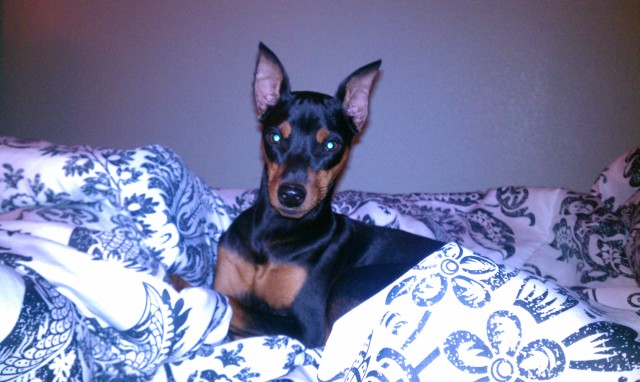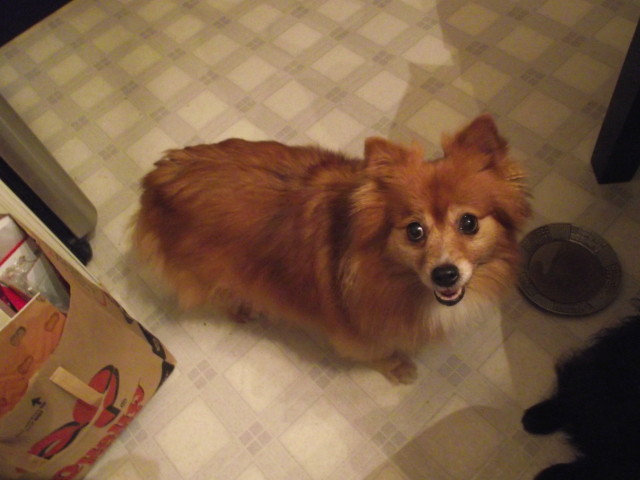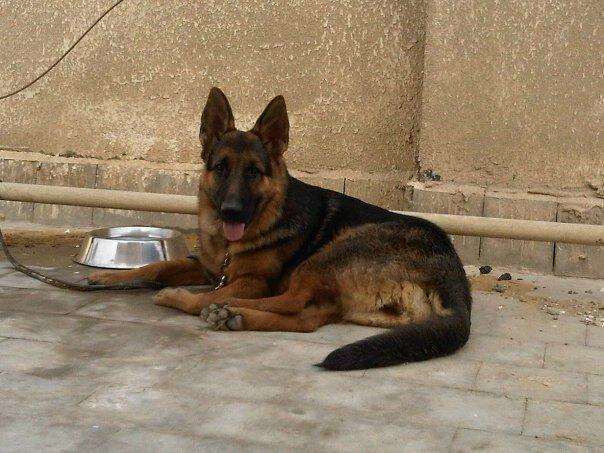QuestionI have an 9 month old Shitzu who I have been potty training outside now since I got her at 8 weeks old. She is doing *really* good... she will go to the door and ruffle the blinds when she needs to go out. However, when I leave her, even if it is just to go outside to get the mail, she will potty in the floor. I honestly think she does this out of spite. I will take her out and she does her business, but then I leave for 3 minutes and she squeezes something out in the floor. HELP! What can I do???
AnswerIt could be the stress of being left alone too. I am not sure exactly what will fix the problem. Spay her if not already. Better leadership on your part might help. The key to most behavior problems is approaching things using the dog's natural instincts. Dogs see all the people and dogs in the household as a pack with each having their own rank in the pack and a top dog. Life is much easier if the 2 legged pack members outrank the 4 legged ones. You can learn to play the role of top dog by reading some books or going to a good obedience class. A good obedience class or book is about you being top dog, not about rewarding standard commands with a treat. Start at http://www.dogsbestfriend.com/ For more on being top dog, see http://www.dogbreedinfo.com./topdogrules.htm
Building her confidence could help. Play tug of war with the dog and lose. However at the end of the game, take the rope or toy and put it up, less the dog becomes confused about who is top dog.
Ropes from the pets' store quickly turn to hazardous shreds. Ones I made
lasted much better. Go to a hardware or home center that sells rope by the
foot. Buy 2' of 3/4" poly rope. Melt the ends, and tie knots in it. Get
them as tight as possible, put it in a vise and pound it with a hammer. Watch
carefully, and be ready to discard when it comes apart.
Finally, make sure it has a den to live in. If you are not using a crate, buy one. The dog may be happier in its den than loose in the house. It relaxes, it feels safe in its den. It rests, the body slows down reducing the need for water and relieving its self. Dogs that have been crated all along do very well. Many of them will rest in their crates even when the door is open. I think the plastic ones give the dog more of a safe, enclosed den feeling. Metal ones can be put in a corner or covered with something the dog can't pull in and chew. Select a crate just big enough for the full grown dog to stretch out in.
A dog that has not been crated since it was little, may take some work.
Start out just putting its toys and treats in the crate. Praise it for going
in. Feed it in the crate. This is also an easy way to maintain order at
feeding time for more than one dog.
It is only natural that a puppy resists its crate at first. What the puppy
wants more than anything else is to be with others, you, anyone else in the
household, and any other pets. In our modern society, even if we are home,
other things distract us from the attention an uncrated puppy must have. The
only real solution is to crate the dog when you aren't around. Leave it some toys. Perhaps a Kong filled with peanut butter. Don't leave anything in the crate the dog might chew up. Rather than relaxing and catching a nap in their den, some puppies protest by fouling the crate. I haven't had this problem. As I said, I see many questions suggesting it, and saw my daughter fight the problem.
A wire grid in the bottom of the crate will help keep the puppy up out of urine and to a lessor extent stools. They are available with the crates, but expensive and hard to find. A piece of closely spaced wire closet shelving from a home supply place is cheaper. This reduces the mess, making the protest much less effective. The longer haired the puppy, the higher it needs to be. In warmer weather, you can just haul the crate out and hose everything off. When the puppy sees you coping with the situation, and you stand your ground, most of them give up and learn to relax, and that you will return. One more thing that may help is using a smaller crate, or blocking off part of a larger one so the puppy can't fouled one spot and retreat.
The "shut the puppy in a safe room" is a fallacy. Very few houses even have a
safe room. How many of us have a room with a hard surfaced floor and nothing
else? Most rooms have electrical cords to chew if nothing else. In addition
to destroying anything a bored puppy finds to chew, it may choke or have
intestinal blockage from the pieces. I had a friend that left her dog in a
"safe" room. It ate a hole in the floor covering. The safe rooms fail to
give the dog the comfort of the enclosed space their instinct requires. Nor
do they restrict activity extending the time the dog can go without relieving
itself.

 Redish bump between dogs toes
QuestionHello I have a three year old Australian Shephe
Redish bump between dogs toes
QuestionHello I have a three year old Australian Shephe
 My miniature pinscher :)
Question
Chanel
I had a miniature pinscher of 8
My miniature pinscher :)
Question
Chanel
I had a miniature pinscher of 8
 Pomeranian or Pomeranian mix
Question
Brandy my Pomeranian
Hi I have a Dog na
Pomeranian or Pomeranian mix
Question
Brandy my Pomeranian
Hi I have a Dog na
 doggie doldrums
Questionsad dog
QUESTION: I have a 2 year old go
doggie doldrums
Questionsad dog
QUESTION: I have a 2 year old go
 Delayed German Shepherd Heat
QuestionMy German Shepherd
QUESTION: I have a Ge
Delayed German Shepherd Heat
QuestionMy German Shepherd
QUESTION: I have a Ge